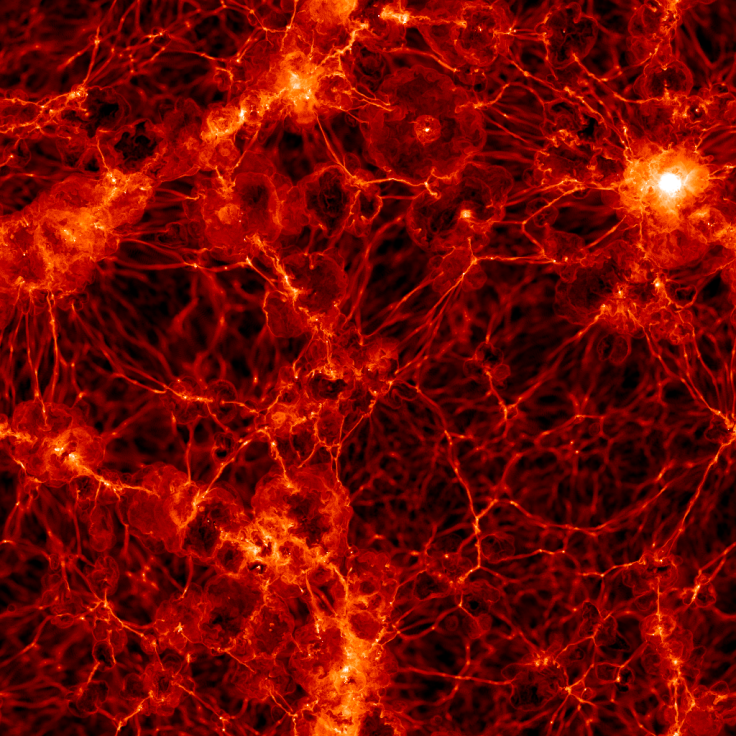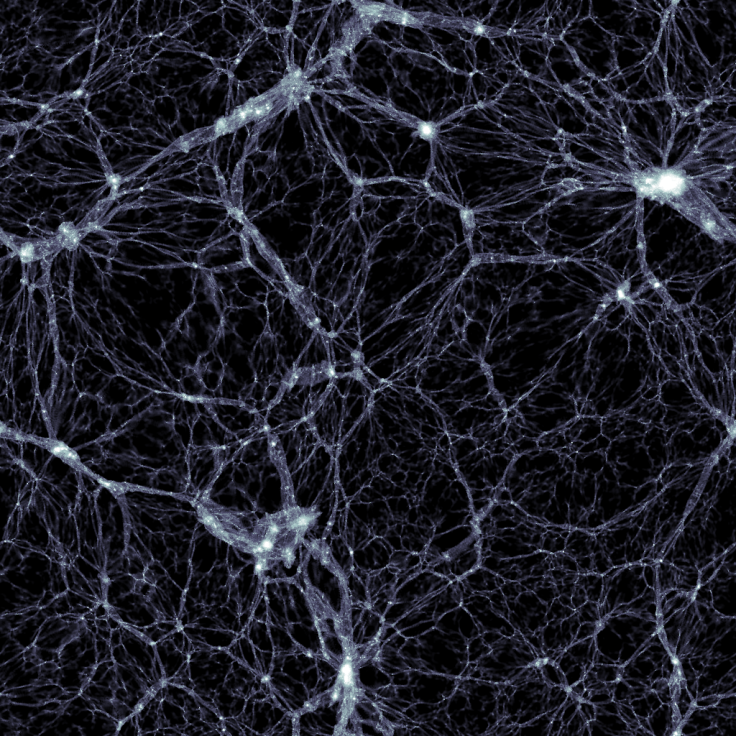Illustris project: Massive voids in space contain 20% of universe's 'normal matter'

Massive voids in space contain around 20% of the "normal matter" in the universe, having been pushed there by supermassive black holes, scientists have suggested. Using data from the Illustris project, which is a massive simulation of the evolution and formation of galaxies starting from when the universe was just 12 million years old, researchers looked to better understand the composition of the universe.
Our current understanding of the universe is that it is made up of around 70% dark energy, 25% dark matter and 5% normal matter. An issue arises, however, because we can only see about half of the normal matter – dubbed the "missing baryon problem".
The universe can be imagined as a massive web. Galaxies and everything in them – like planets and stars – are concentrated into filaments stretching around the edges of giant webs. These voids were thought to be largely empty, and are known as the "loneliest places in the universe".
However, research published in the Monthly Notices of the Royal Astronomical Society now suggests these voids are not so empty after all. An international team of astronomers used the Illustris data to measure the mass and volume of these filaments along with the galaxies in them.

Illustris Project
The Illustris Project is a series of astrophysical simulations. In April 2014, the team released a time-lapse vide showing 13 billion years of history in just six minutes. This virtual universe was made with a computer created by scientists at the MIT/Harvard-Smithsonian Centre for Astrophysics. The computer programme uses 12 billion 3D pixels and took five years to develop. Had the simulation been carried out on a standard desktop computer, it would have taken 2,000 years to complete.
"Illustris is like a time machine. We can go forward and backward in time. We can pause the simulation and zoom into a single galaxy or galaxy cluster to see what's really going on," said co-author Shy Genel.
Illustris simulates a cube of space measuring 350 million light years on each edge. It shows how gravity and the flow of dark and normal matter has changed from when the universe was 12 million years old through to its current age – about 13.8 billion years.
They found that about half of the total mass of the universe – located in areas where galaxies reside – is compressed into a volume of 0.2% of the universe we can see (i.e. galaxies only make up around 1/500<sup>th of the volume of the universe). Another 44% of the mass is in the filaments and 6% is in the voids. The voids make up about 80% of the volume.
However, they also found 20% of the universe's normal matter appears to have been transported into the voids, with supermassive black holes in the centre of galaxies causing this shift. Some matter being pulled to the black holes is converted to energy and delivered to the surrounding gas, which leads to large outflows of matter that ends up in these voids – thereby potentially solving the missing matter problem.
Team leader Markus Haider, from the University of Innsbruck in Austria, said: "This simulation, one of the most sophisticated ever run, suggests that the black holes at the centre of every galaxy are helping to send matter into the loneliest places in the universe. What we want to do now is refine our model, and confirm these initial findings."
© Copyright IBTimes 2025. All rights reserved.






















